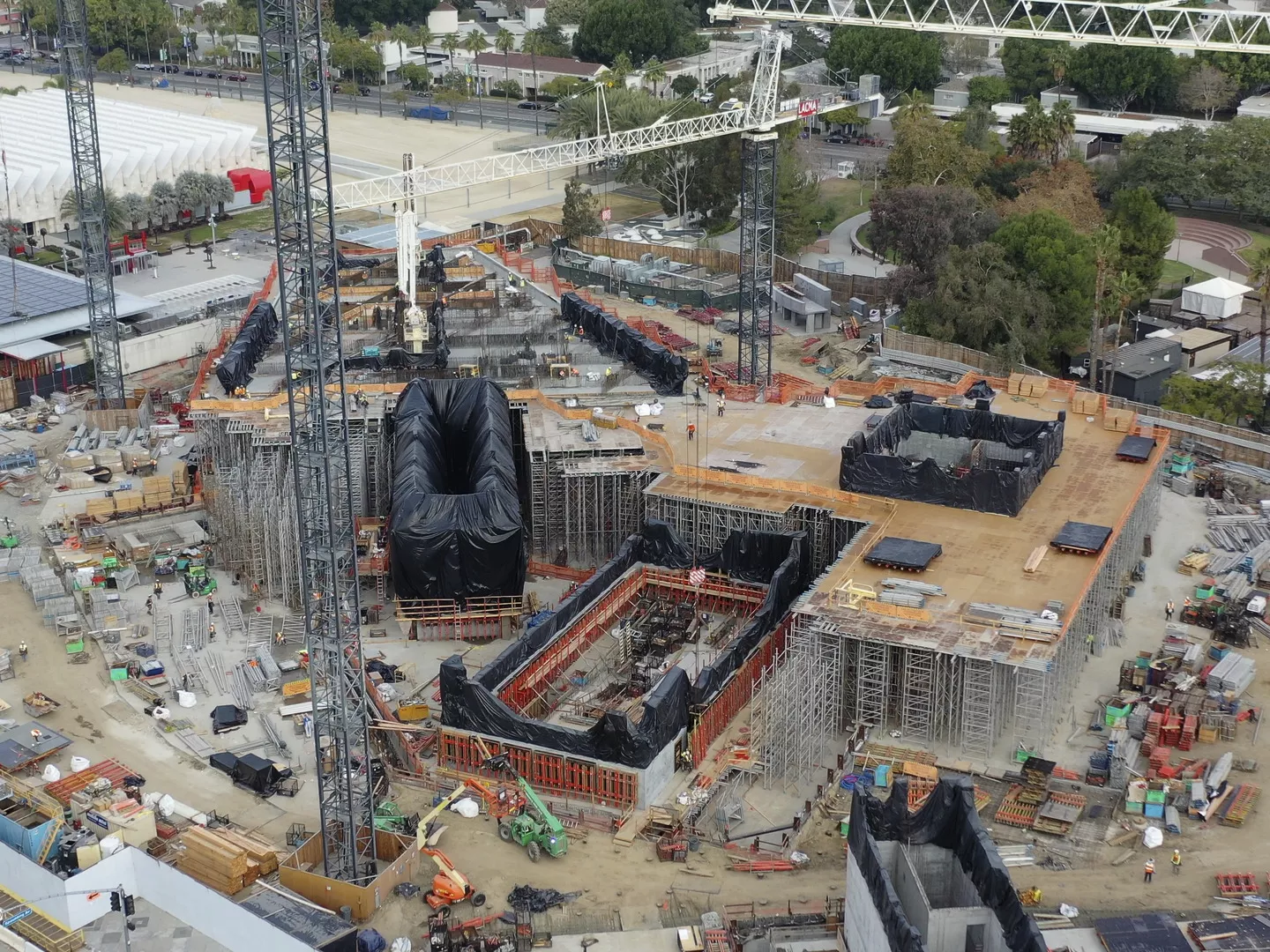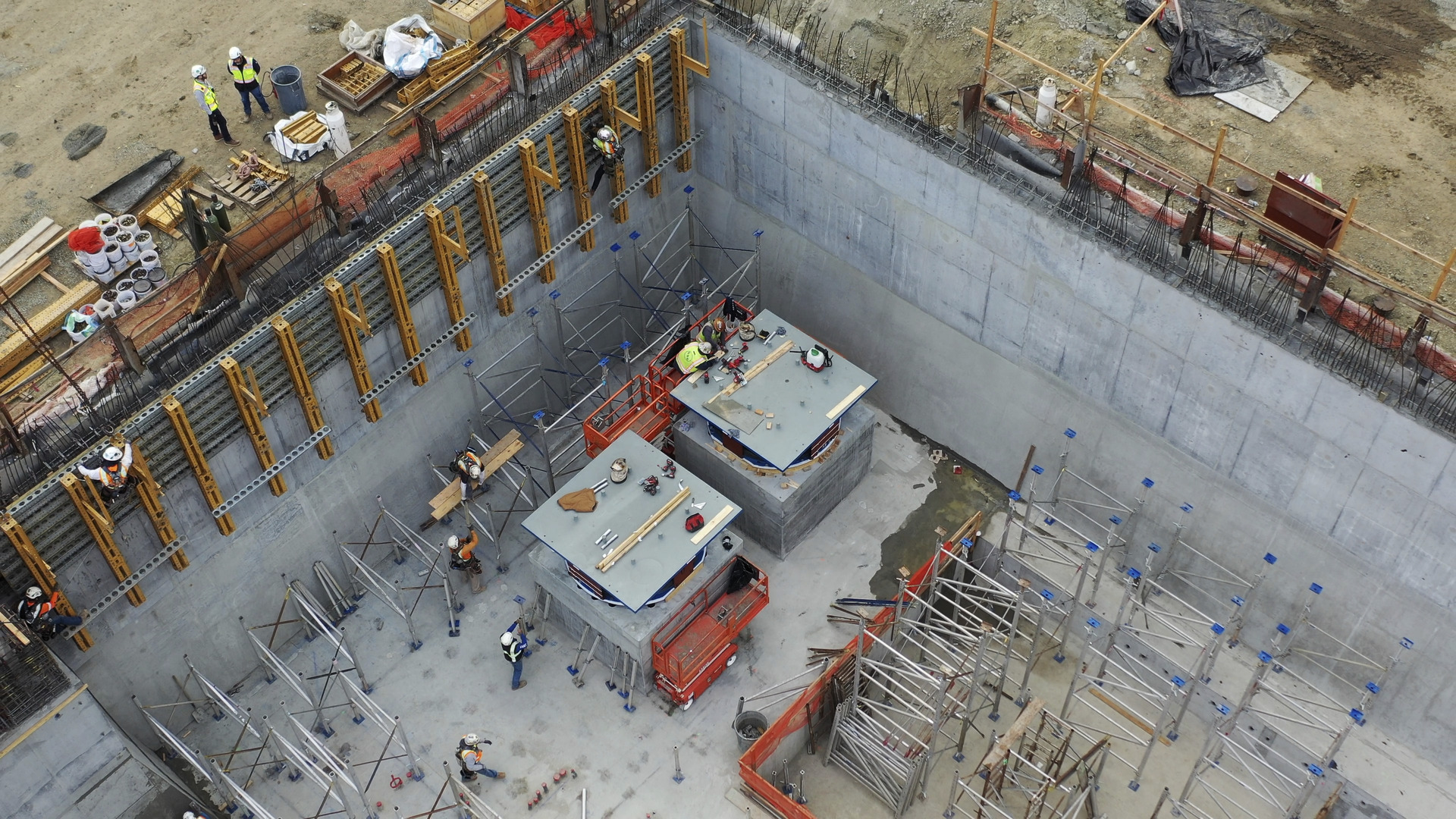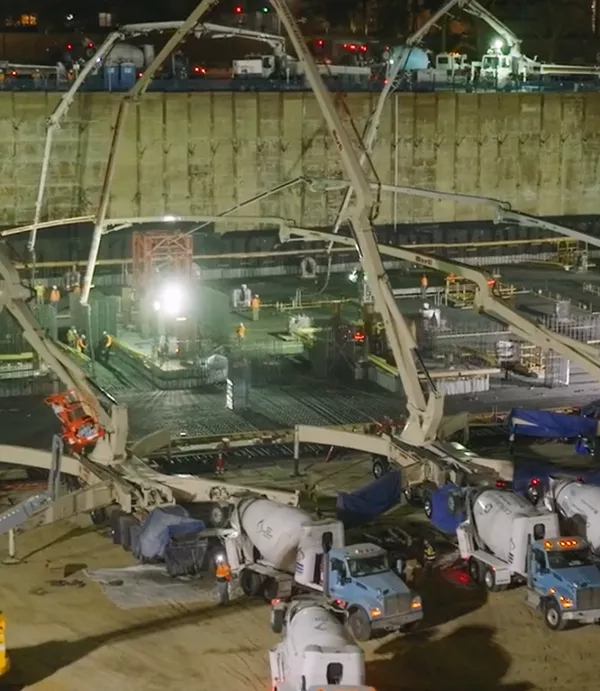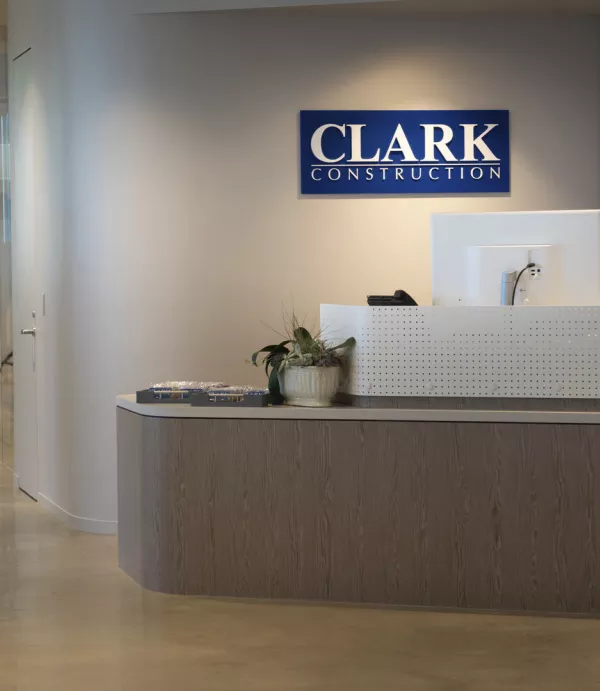Seismic Technology Helps LACMA Team Protect People and Art
December 11, 2022

Earthquake protection is an important aspect of construction in a seismically active region like Southern California. At the Los Angeles County Museum of Art (LACMA), Clark is installing state-of-the-art seismic protection to fortify the building against earthquakes and safeguard the people and art within the museum’s new Building for the Permanent Collection.
The LACMA Building for the Permanent Collection represents a bold new vision for how art museums can connect and engage with visitors. The project’s scope of work includes replacing four deteriorating buildings with one 347,500-square-foot structure spanning Los Angeles’ famed Wilshire Boulevard.
The structure – designed to protect the building and its contents from damage caused by seismic activity – is supported by 56 seismic base isolators. The isolators are comprised of two spherical plates: the bottom plate bolted to the foundation and the top plate bolted to the building above. In between the plates is an articulated slider lined with a special composite, designed to move in any direction along the plates. In the event of an earthquake, the slider keeps the building from shaking violently by sliding between the plates in a fluid motion. This isolation also limits the movement of the building’s contents, which in this case is thousands of people and priceless art.
The advantage of base isolators is that the building can experience a seismic event and suffer minimal damage. The isolation also limits the movement of the building's contents, which in this case is thousands of people and priceless art.
- Chris Bell, Senior Project Manager, Clark Construction
There are sixteen 7,500-pound isolators supporting the ground floor and forty 50,000-pound isolators placed in the four corners of the towers of the building. At more than nine feet in diameter, the larger isolators allow the building to shift up to five feet in any direction during a seismic event.
The isolators used at LACMA are particularly sophisticated due to the triple friction pendulum design. The concave plates and sliders adapt to the earthquake’s intensity. During smaller seismic events, the isolators are tuned for motion in the slider, while during larger earthquakes, the isolators are tuned for motion in the plates.
Image

Prior to installation, Clark partnered with SOM, the structural engineer, and Earthquake Protection Systems, the base isolator manufacturer, to develop several mockups to confirm the isolators would perform as designed. Two full-scale mockups were used during a peer review testing process, while additional reduced-scale base isolators were used to test performance during extreme earthquakes. Clark also worked closely with the trade contractor responsible for installing the base isolators to construct mockups of the grout connection process, a critical aspect of installation. By constructing these mockups, Clark and its trade contractors were able to vet assumptions, practice important placement methods, and seamlessly install this component.
The team recently completed base isolator installation at the end of 2022. The Building for the Permanent Collection is slated for completion in 2024.


